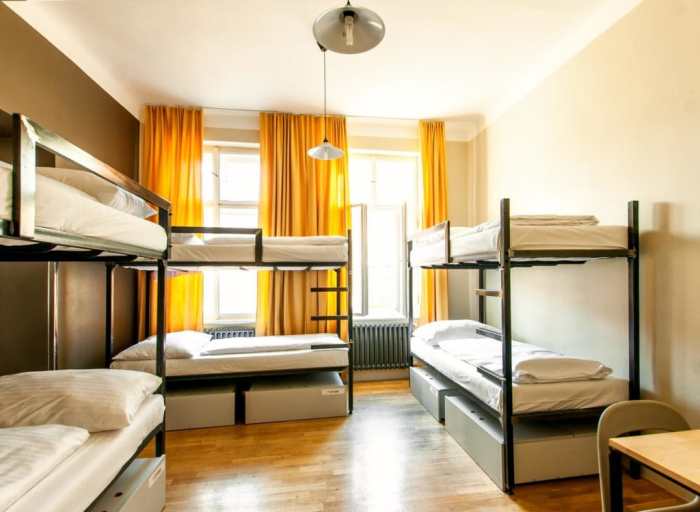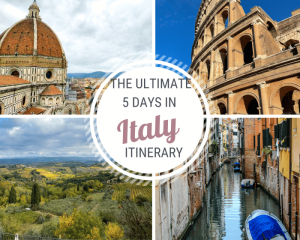
Reviews of the most popular hostels in Europe offer a compelling glimpse into budget-friendly travel across the continent. This exploration delves into the top-rated hostels, examining their amenities, locations, and the overall experiences they provide to budget-conscious travelers. We’ll uncover what makes certain hostels stand out from the crowd, exploring factors such as neighborhood appeal, proximity to attractions, and the unique services offered.
From bustling city centers to quieter residential areas, we’ll analyze the pros and cons of various hostel locations, helping you make informed decisions for your next European adventure. This guide will also cover practical considerations, such as transportation links and safety, ensuring a smooth and enjoyable trip.
Related Travel Information: Reviews Of The Most Popular Hostels In Europe


Urban photography offers a fantastic way to capture the essence of European cities, transforming everyday scenes into captivating memories. By understanding a few key techniques, you can elevate your travel photos from snapshots to stunning works of art. This section provides practical tips to help you achieve this.
Finding the Right Light, Reviews of the most popular hostels in Europe
The quality of light dramatically impacts the mood and aesthetic of your photographs. Golden hour, the period shortly after sunrise and before sunset, offers warm, soft light ideal for creating a sense of tranquility and depth. Conversely, the “blue hour,” occurring just before sunrise and after sunset, provides a cool, moody atmosphere, perfect for capturing cityscapes at night. Experimenting with these times of day can significantly enhance your images.
Consider the direction of the light; backlighting can create silhouettes, while side lighting can highlight textures and details.
Mastering Composition
Effective composition is crucial for visually compelling photographs. The rule of thirds, a fundamental guideline in photography, suggests placing key elements along imaginary lines that divide the frame into nine equal parts. This creates a more balanced and engaging image compared to centering the subject. Leading lines, such as streets, rivers, or railway tracks, can draw the viewer’s eye into the photograph, adding depth and visual interest.
Consider incorporating elements like symmetry, patterns, and contrasting textures to create a more dynamic and engaging composition.
Using Perspective Creatively
Experimenting with different perspectives can significantly enhance your urban photography. Shooting from a low angle can create a sense of grandeur, making buildings appear taller and more imposing. Conversely, a high vantage point can offer a sweeping panoramic view, showcasing the city’s layout and architecture in a unique way. Consider incorporating foreground elements to add depth and context to your images.
For example, a person walking down a street can provide a sense of scale and human element to the image, adding a story to your photo.
Capturing Movement and Energy
European cities are vibrant and full of movement. To capture this energy, experiment with techniques like panning, where you follow a moving subject with your camera, blurring the background while keeping the subject relatively sharp. This technique creates a sense of motion and dynamism, ideal for capturing traffic, people rushing by, or trams moving along a track. A slow shutter speed can also be used to capture light trails from cars at night, adding a sense of dynamism and artistry to your nocturnal cityscapes.
Editing Your Photos
Post-processing can significantly enhance your urban photographs. Basic adjustments like brightness, contrast, and saturation can greatly improve the overall look and feel of your images. However, it’s crucial to avoid over-editing, which can make the photos look unnatural. Aim for subtle enhancements that enhance the natural beauty of your shots, rather than drastically altering them. Consider using editing software to adjust the white balance, ensuring that the colours in your images are accurate and appealing.
Related Travel Information: Reviews Of The Most Popular Hostels In Europe


Exploring Europe’s vibrant cities often means navigating bustling streets and iconic landmarks. However, a refreshing escape into nature is equally rewarding, offering a tranquil counterpoint to the urban hustle. Urban parks and green spaces provide vital breathing room, offering opportunities for relaxation, recreation, and a connection with the natural world. These green lungs are not merely aesthetic additions; they contribute significantly to the overall well-being of city dwellers and the environment.
Notable Urban Parks and Green Spaces in Europe
Three examples highlight the diverse character and importance of urban parks across Europe. These spaces, each unique in its design and history, demonstrate the varied ways cities integrate nature into their fabric.
First, we have Hyde Park in London, England. Established in the 1530s, Hyde Park is one of London’s eight Royal Parks and a significant historical landmark. Covering a vast area, it features Serpentine Lake, a popular spot for boating and swimming, and Speaker’s Corner, a traditional site for public speaking and debate. The park’s diverse landscape includes sprawling lawns, wooded areas, and flower gardens, providing a multitude of recreational opportunities for visitors, from leisurely strolls to more active pursuits.
Its long history and iconic status contribute significantly to London’s cultural identity.
Secondly, Tiergarten in Berlin, Germany, represents a different style of urban park. Established in the 16th century as a royal hunting ground, Tiergarten evolved into a large public park in the 19th century. It features a diverse array of trees and shrubs, creating a tranquil atmosphere amidst the city’s energy. Tiergarten boasts numerous monuments, including the Brandenburg Gate, and offers walking paths, cycle routes, and various recreational facilities, including cafes and restaurants.
The park’s size and layout offer a sense of spaciousness and escape, a valuable asset to a densely populated city.
Finally, consider Parc de la Villette in Paris, France. This modern park, designed in the late 20th century, stands in contrast to the historical parks of London and Berlin. It’s characterized by its innovative design, incorporating contemporary architecture and open spaces. The park features a science museum, concert halls, and a network of canals and waterways, creating a vibrant and dynamic atmosphere.
Parc de la Villette reflects a more contemporary approach to urban park design, prioritizing public art, cultural facilities, and a sense of community.
Ultimately, finding the perfect hostel significantly enhances the backpacking experience. By understanding the nuances of hostel choices, from amenities and location to price and neighborhood vibe, travelers can optimize their trip, maximizing enjoyment and minimizing unexpected hassles. This exploration of Europe’s most popular hostels provides a solid foundation for planning a memorable and budget-friendly European adventure.
FAQ Section
What is the average price range for a hostel bed in Europe?
Prices vary greatly depending on location and season, but generally range from €20 to €50 per night.
How do I book a hostel in advance?
Popular booking websites like Hostelworld and Booking.com offer extensive listings and allow for easy online reservations.
What should I pack for a hostel stay in Europe?
Essentials include a padlock for your locker, a towel (many hostels don’t provide them), comfortable walking shoes, and adaptable clothing layers.
Are hostels safe?
Reputable hostels prioritize safety with measures like secure lockers and 24/7 staff. However, it’s always advisable to take standard travel safety precautions.




